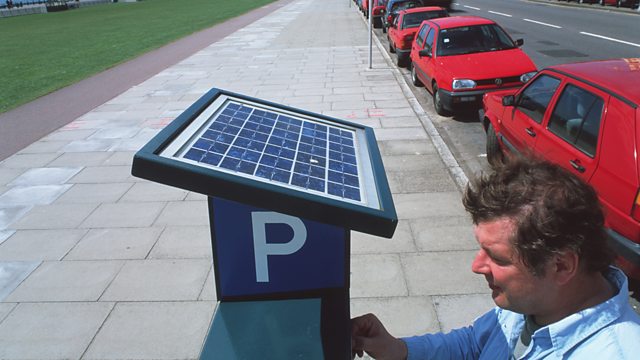Wind energy
Wind is produced as a result of giant convection currents in the Earth's atmosphere, which are driven by heat energy from the Sun. This means that the kinetic energy in wind is a renewable energy resource - as long as the Sun exists, the wind will too.
Wind turbines
Wind turbines use the wind to drive turbines directly. They have huge blades mounted on a tall tower. The blades are connected to a 'nacelle', or housing, which contains gears linked to a generator. As the wind blows, it transfers some of its kinetic energy to the blades, which turn and drive the generator. Several wind turbines may be grouped together in windy locations to form wind farms.
Advantages
- Wind is a renewable energy resource and there are no fuel costs.
- No harmful polluting gases are produced.
Disadvantages
- Wind farms are noisy and may spoil the view for people living near them.
- The amount of electricity generated depends on the strength of the wind.
- If there is no wind, there is no electricity.
Water energy
Like the wind, water can be used to drive turbines directly. There are several ways that water can be used, including waves, tides and falling water in hydroelectric power schemes.
Wave
The water in the sea rises and falls because of waves on the surface.Wave machines use the kinetic energy in this movement to drive electricity generators.
Tides
Huge amounts of water move in and out of river mouths each day because of the tides. A tidal barrage is a barrier built over a river estuary to make use of the kinetic energy in the moving water. The barrage contains electricity generators, which are driven by the water rushing through tubes in the barrage.
Hydroelectric power
Like tidal barrages, hydroelectric power (HEP) stations use thekinetic energy in moving water. But the water comes from behind a dam built across a river valley. The water high up behind the dam contains gravitational potential energy. This is transferred to kinetic energy as the water rushes down through tubes inside the dam. The moving water drives electrical generators, which may be built inside the dam.
Advantages
- Water power in its various forms is a renewable energy resource and there are no fuel costs.
- No harmful polluting gases are produced.
- Tidal barrages and hydroelectric power stations are very reliable and can be easily switched on.
Disadvantages
- It has been difficult to scale up the designs for wave machines to produce large amounts of electricity.
- Tidal barrages destroy the habitat of estuary species, including wading birds.
- Hydroelectricity dams flood farmland and push people from their homes.
- The rotting vegetation underwater releases methane, which is a greenhouse gas.
Geothermal energy
Hot water and steam from deep underground can be used to drive turbines: this is called geothermal energy. Geothermal and nuclear energy are the only energy resources that do not come from the Sun.
Volcanic areas
Several types of rock contain radioactive substances such as uranium. Radioactive decay of these substances releases heat energy, which warms up the rocks. In volcanic areas, the rocks may heat water so that it rises to the surface naturally as hot water and steam. Here the steam can be used to drive turbines and electricity generators.
Geothermal power stations are located in places such as Iceland,California and Italy.
Hot rocks
In some places, the rocks are hot, but no hot water or steam rises to the surface. In this situation, deep wells can be drilled down to the hot rocks and cold water pumped down. The water runs through fractures in the rocks and is heated up. It returns to the surface as hot water and steam, where its energy can be used to drive turbines and electricity generators. The diagram shows how this works.
How a generating station creates energy
Advantages
- Geothermal energy is a renewable energy resource and there are no fuel costs.
- No harmful polluting gases are produced.
Disadvantages
- Most parts of the world do not have suitable areas where geothermal energy can be exploited.
Solar heating
Solar energy is used to generate electricity and to produce hot water. Solar energy is energy released by nuclear fusion in the Sun.
Solar cells

A solar-powered ticket machine
Solar cells are devices that convert light energy directly into electrical energy. You may have seen small solar cells in calculators. Larger arrays of solar cells are used to power road signs in remote areas, and even larger arrays are used to power satellites in orbit around Earth.
Advantages
- Solar energy is a renewable energy resource and there are no fuel costs.
- No harmful polluting gases are produced.
Disadvantages
- Solar cells are expensive and inefficient, so the cost of their electricity is high.
- Solar cells do not work at night.
This is a cool blog 😎
ResponderEliminar